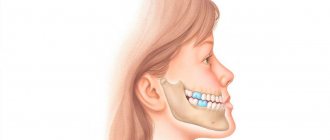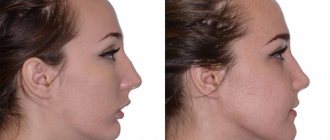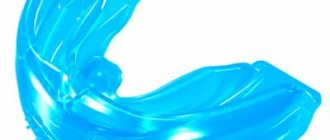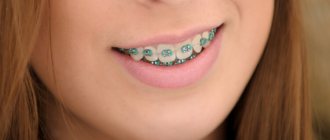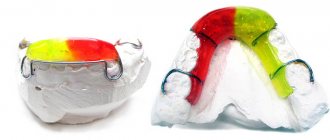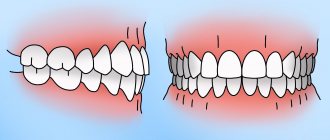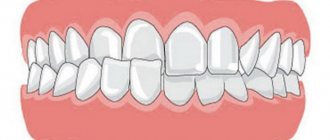One of the key and ongoing problems in orthodontics today is the alignment of crooked teeth and the correction of malocclusion. There are many options for solving this problem, but braces are considered the most effective. The effectiveness of treatment with the help of such systems is very high; another thing is that not everyone agrees to wear bulky and conspicuous structures due to serious psychological discomfort. Such difficulties can arise in both children and adults, so removable braces should be considered as a convenient alternative to permanent systems. Removable structures have their own specifics, they have their own characteristics, and this is what we will talk about today.
What are removable braces and who are they suitable for?
As the name implies, night braces are removable and installed on the patient’s teeth at night. They serve the usual purpose of correcting crooked teeth and malocclusion, just like traditional systems they must be worn for one to two or even three years. Their main difference will be the absence of the need to constantly wear the structure; it can be put on independently at night and for several daytime hours (within 8-12 hours a day).
First of all, removable braces help solve aesthetic problems; they come in the form of aligners, trainers or trays. It is important to consider that such systems can only cope with minor curvatures or the task of expanding the jaw when there is a problem of lack of space for teeth.
Important to know: Temporary structures should not be considered a panacea; in adult patients, after their use, the position of the teeth may return to their original state.
Content
- The impact of malocclusion on health
- Making a choice
- Removable type of braces for adults
- Popular braces
- What is a retainer?
- Systems for teenagers
- For children
- Do your teeth hurt during treatment?
- How to care for your oral cavity?
- Pain after removal
A beautiful smile can work wonders.
People who regularly show their teeth are more successful in life than those who don't. But what to do if nature has not given you the opportunity to smile? The most common reason for this is uneven teeth. A person becomes unsure of himself and begins to communicate less with people. In a word, he develops an inferiority complex. But there is a solution to this problem. Medicine is developing rapidly, and now anyone can get dental braces. With their help you can correct your bite. Moreover, this can be done quite quickly. For example, advanced cases take five years - this is exactly the period required to straighten the teeth.
But not everyone decides to get braces. Why? The fact is that most people are subject to stereotypes. Malocclusion occurs in 70% of the world's population. And what part of them do you think undergo treatment with braces? Less than half! And all because they consider it ineffective and painful. But that's not true.
After all, modern orthodontics offers a huge variety of designs that have different effects on teeth and look different. People who are involved in public life are often concerned about aesthetic issues. This is due to the fact that they have to interact with more people, which will be more difficult to do with designs that, in their opinion, are repulsive. As we have already said, there are different types of braces systems, and one of them is ceramic. It is white in color, so it easily “adjusts” to the natural color of the teeth.
Indications for use
An orthodontist may recommend the use of braces at night in a number of situations, among which the most common may be:
- correction of bite in children under 12 years of age, when the dental-jaw system is still in its formation stage;
- refusal to wear permanent structures for reasons of aesthetics and psychological discomfort;
- the need to expand the jaw if there is a lack of space for teeth;
- the need to consolidate the results of the main treatment using permanent braces.
The decision to use a removable option is made only by the doctor, and only after a thorough analysis of the existing problem and collection of the most detailed information about the patient’s health status and his oral cavity.
Material of manufacture
In terms of material, there are braces made of metal, ceramic, plastic and combined models. The peculiarities of the manufacturing material, the complexity of the clinical case, aesthetic requirements and financial capabilities allow the doctor and the patient to jointly decide which bracket system is better. There are no universal recommendations.
Ligature systems are made from a metal alloy (Orthos, Mini Diamond) and transparent artificially grown sapphire (aesthetic Inspire ICE). Aesthetic ligature braces are superior in size to metal structures. The disadvantage is more complex activation and an increased period of patient adaptation to foreign structures.
aesthetic sapphire Inspire ICE
Non-ligature structures are made of metal (Damon Q, Damon 3MX) and especially durable ceramics (Damon Clear 2). The adaptation period is easier than when installing devices with ligatures. Treatment with Damon systems is reduced by an average of 7 months compared to treatment with ligature braces.
teens with Damon Q braces
If psychological comfort or the characteristics of an adult patient’s profession require an inconspicuous system, it is advisable to choose Inspire ICE sapphire braces or Damon Clear 2 ceramic braces. For a child, sapphire and ceramic structures are not always a good choice due to increased fragility: a teenager can accidentally damage the elements of the system as a result injury or poor diet.
transparent Inspire ICE on typodont
Advantages and disadvantages
Compared to traditional braces, which must be worn permanently, removable braces have both advantages and disadvantages. Regarding the advantages, the following should be highlighted:
- painless treatment;
- absence of any difficulties in terms of hygiene procedures;
- speed of adaptation;
- no inconvenience or discomfort while wearing;
- there are no difficulties when eating;
- completely suitable for children, since their jaw formation process has not yet been completed;
- will be an effective help in getting rid of the bad habit of biting nails or sucking fingers.
The main disadvantage of non-permanent structures is their inability to cope with serious pathologies; they are limited to only minor problems. That is why, for the most part, night braces are used in pediatric dentistry and are much less often used for adults.
How does the withdrawal process work?
The aligners are easily removed from the teeth and must be removed from the mouth for morning and evening care. But a non-removable retainer will have to be removed by a doctor after the braces are removed . But don't rush into this decision. If the product does not bother you, continue wearing it.
Is it possible to remove the wire yourself?
The composite material on which the tape is attached sometimes flies off on its own. Therefore, in theory, the device can be removed independently. But you need to understand that removing a dental retainer without a doctor is a big risk. You can damage the enamel and tooth. Just ask your orthodontist for help, and he will remove the wire in a few minutes.
Types of removable bracket systems
There are three types of removable orthodontic structures, each of which has its own characteristics and specifics:
- Trainers. Thanks to the use of elastic silicone in their manufacturing process, they are extremely convenient to use. They are worn all night; there is no need for corrective measures while wearing them. Serve the purpose of separating teeth and bringing them into the correct position. Thanks to the use of trainers, the problem of correcting the bite is successfully solved, the teeth become in the correct position, and all functions of the jaw are brought back to normal.
- Mouthguards. They are created using 3D technology from metals and polymers that are not subject to oxidation. Each design is made individually and fully corresponds to the jaw structure of a particular patient. Each option is slightly different from the previous one, which is necessary to make corrections during the treatment process. The service life of one mouthguard is approximately 15-20 days, after which it is replaced with a modified version.
- Plates. Used exclusively at night, used in pediatric dentistry. Like mouth guards, they are made individually from impressions and are held on the teeth using special wire hooks. They are removed for hygiene procedures and during meals. Often they serve the purpose of expanding the jaw in children; in this case, an expanding screw is placed in the oral cavity between the parts of the structure.
What tasks does the mouthguard cope with?
A dental mouthguard also performs the following tasks:
- an individual mouthguard provides prevention of dental misalignment;
- helps maintain the integrity of the enamel, and, therefore, reduce the likelihood of developing caries;
- reduces the risk of developing the consequences of bruxism, namely, headaches, pain in the projection of the jaw, which can radiate to the back and neck.
Dentistry for those who love to smile
+7
Make an appointment
Caring for removable braces
The service life of the product and the effectiveness of treatment depend on proper care. Do not use hot water to wash the structure, as this can lead to its deformation. Cleaning trainers and mouth guards is done with regular soap; special tablets are used for records. Removable braces should be stored in special cases.
Be sure to visit your dentist regularly and promptly to monitor the condition of your teeth and braces. If any malfunctions or damage are detected, the system must be replaced.
Costs for follow-up visits to the orthodontist after braces are installed
After installing braces, you need to regularly visit the orthodontist’s office to evaluate the results of treatment and correct the arch of the system, replace structural elements that are worn out or damaged. The frequency of visits will depend on the type of braces; if you choose a self-ligating system for installation, you will need to come to the clinic once every two months.
Control visits are not included in the price of installing braces and are paid separately. The cost of a planned visit to the orthodontist in our clinic depends on the set of measures that will be carried out during braces correction.
Problems solved with night guards
Mouthguards are used not only to solve problems with bite, they can also be used in situations such as:
- treatment of teeth grinding (bruxism) - mouth guards protect teeth from abrasion, which is caused by involuntary muscle contraction, but it should be remembered that they do not eliminate the problem itself; this requires separate procedures;
- consolidation of the treatment result with non-removable structures; it is the mouth guards that prevent the threat of teeth returning to their previous state;
- improving the condition of enamel and strengthening teeth - to prevent the risk of tooth loss, dentists recommend wearing mouth guards with mineralizing gel.
Removable braces are perhaps the easiest way to correct simple bite problems and achieve a beautiful smile. Only the dentist should choose the type of design and its parameters; this aspect is determined depending on the complexity of the pathology and the available options for solving it.
Why is bruxism dangerous?
Bruxism is uncontrollable grinding or clenching of teeth due to spasms in the chewing muscles. This is a fairly common phenomenon, but not all patients realize that the disease poses serious problems:
- pathological abrasion of tooth enamel;
- loss of fillings, crowns;
- dysfunction of the temporomandibular joint (clicking, pain when opening/closing the mouth);
- chronic insomnia and fatigue;
- headaches, dizziness.
Teeth grinding is mainly characteristic of the night, when a person is sleeping and does not control the movements of the jaw. However, in many patients the problem also manifests itself during the day - they involuntarily clench their teeth under stress or when concentrating.
How much does it cost to get braces on an adult's teeth?
There will be no noticeable difference between the price of orthodontic treatment for a child and for an adult. The only thing is that the course of bite correction for a child can be shorter, since children’s teeth quickly take the correct position, so some savings are possible on planned visits to the orthodontist. And, in addition, for children, inexpensive metal braces of a classical design are usually chosen - vestibular, with ligatures.
Adults are more concerned about the aesthetics of their teeth, so they often choose lingual and ceramic braces, which is why the price of treatment is higher.
